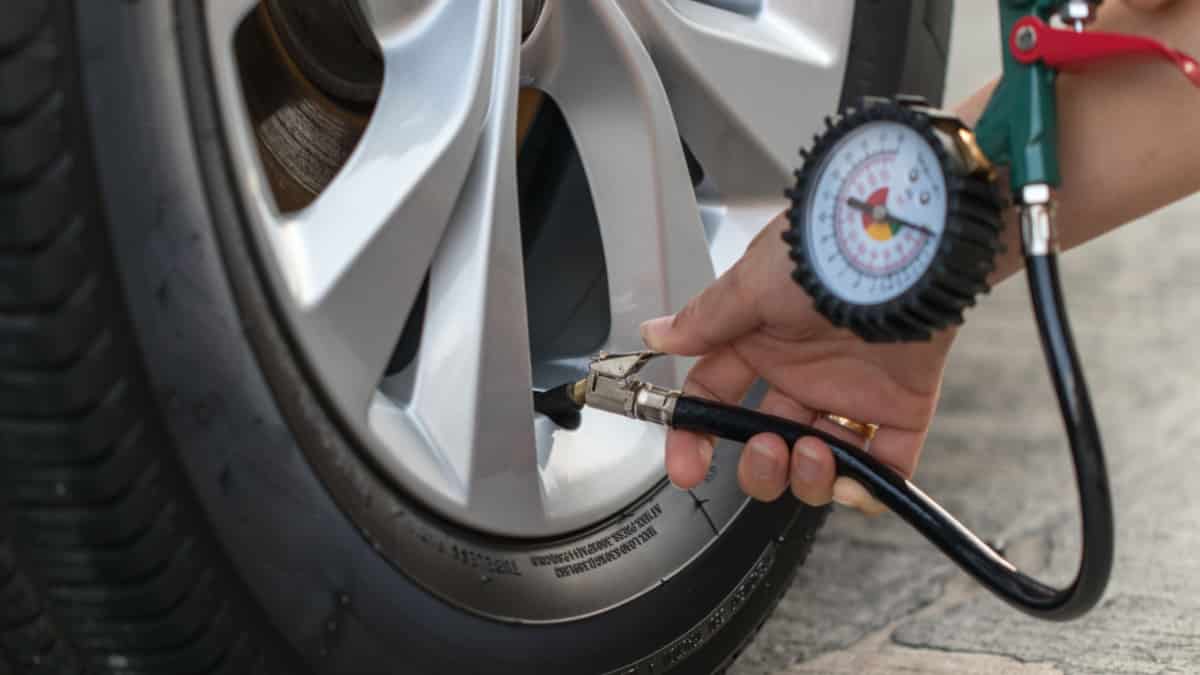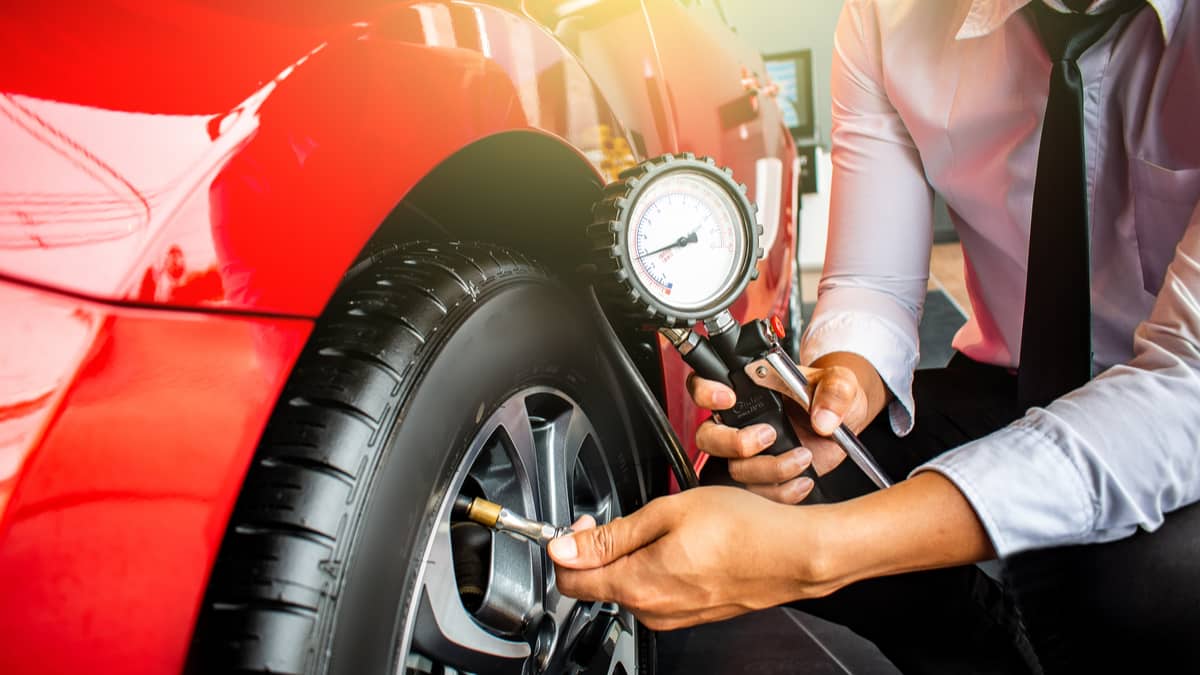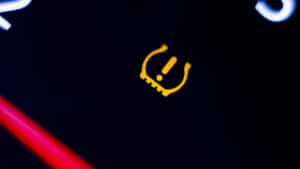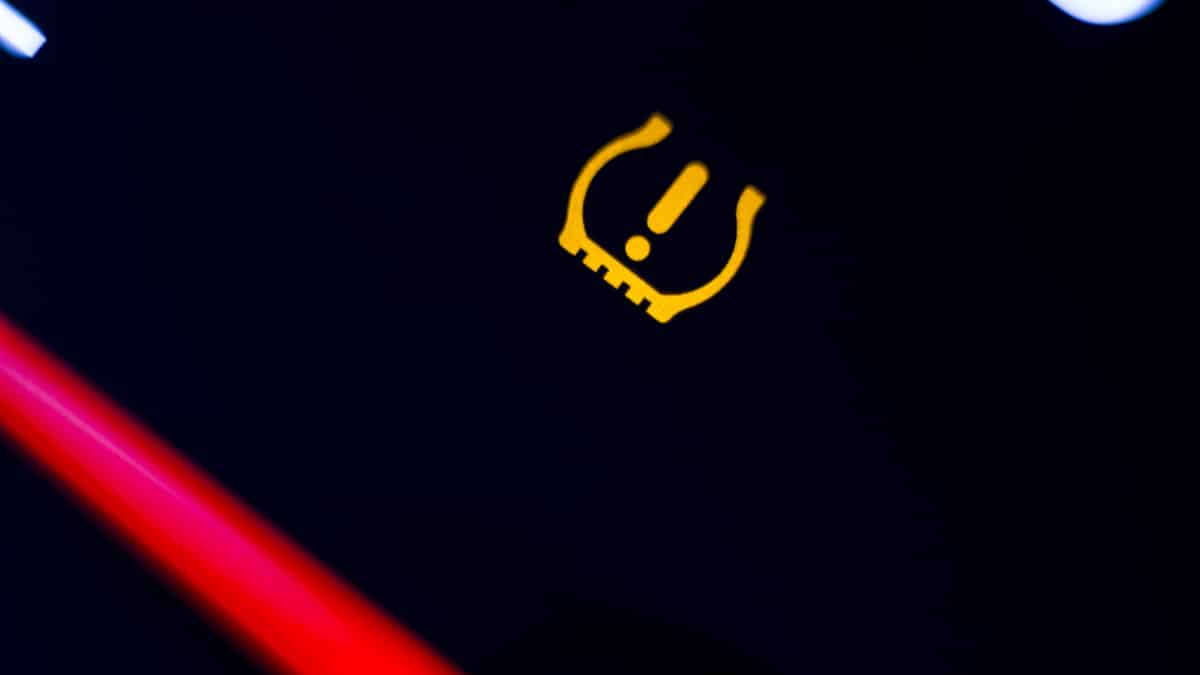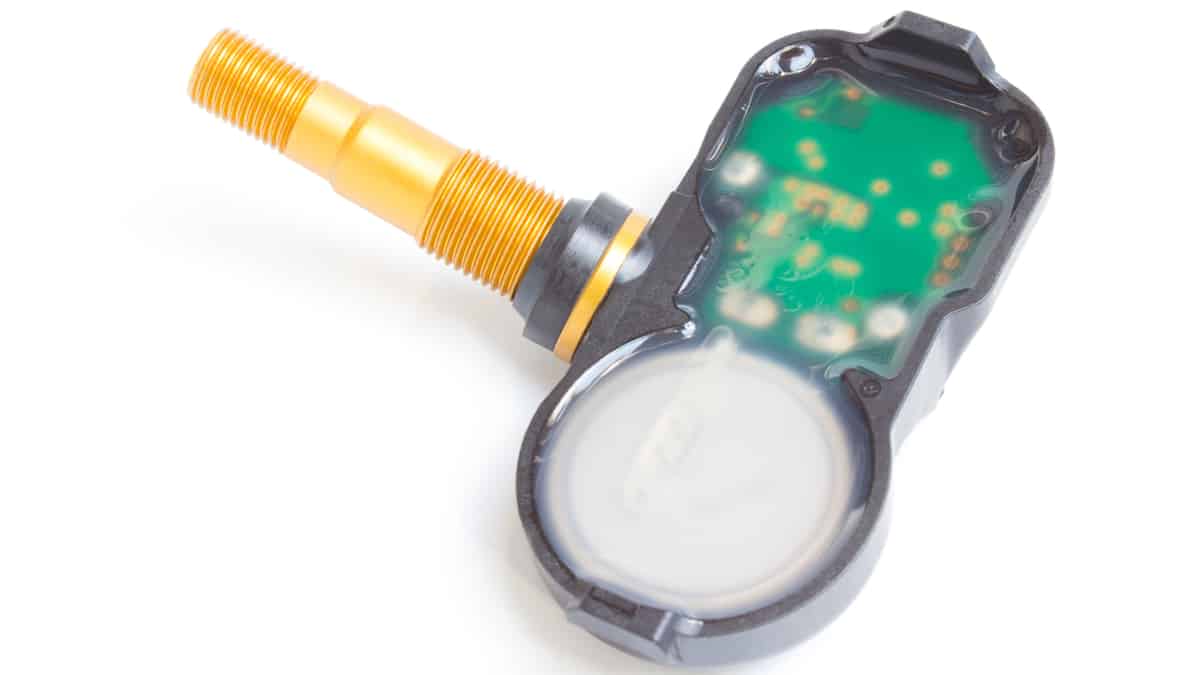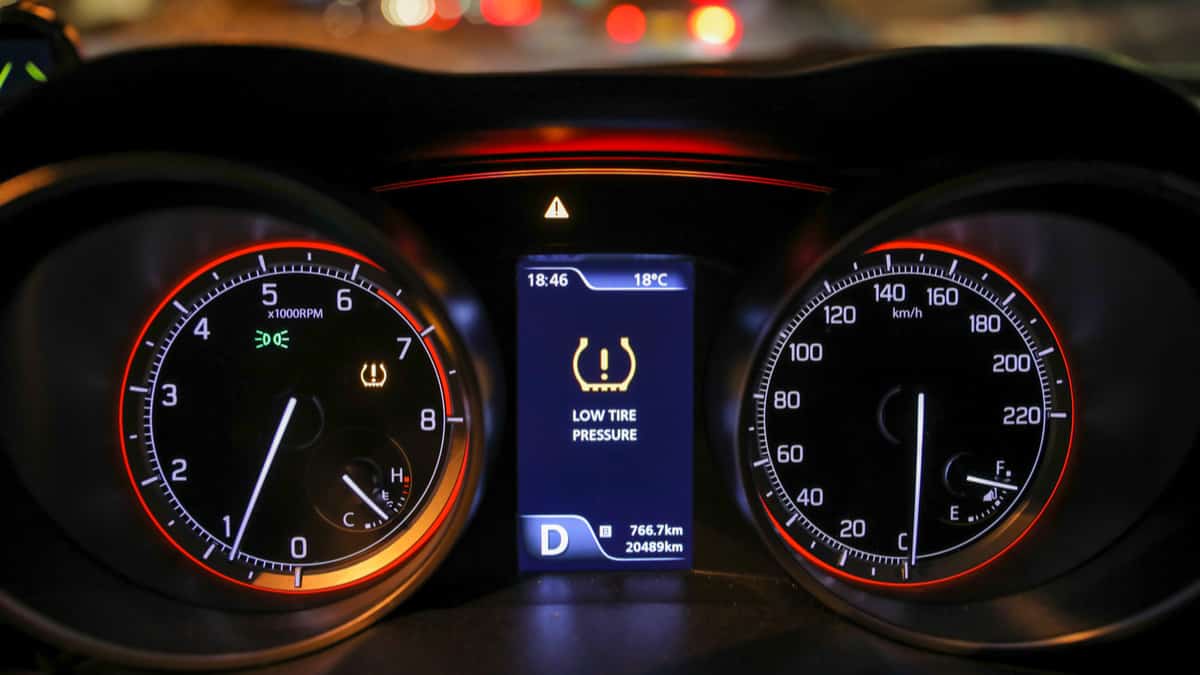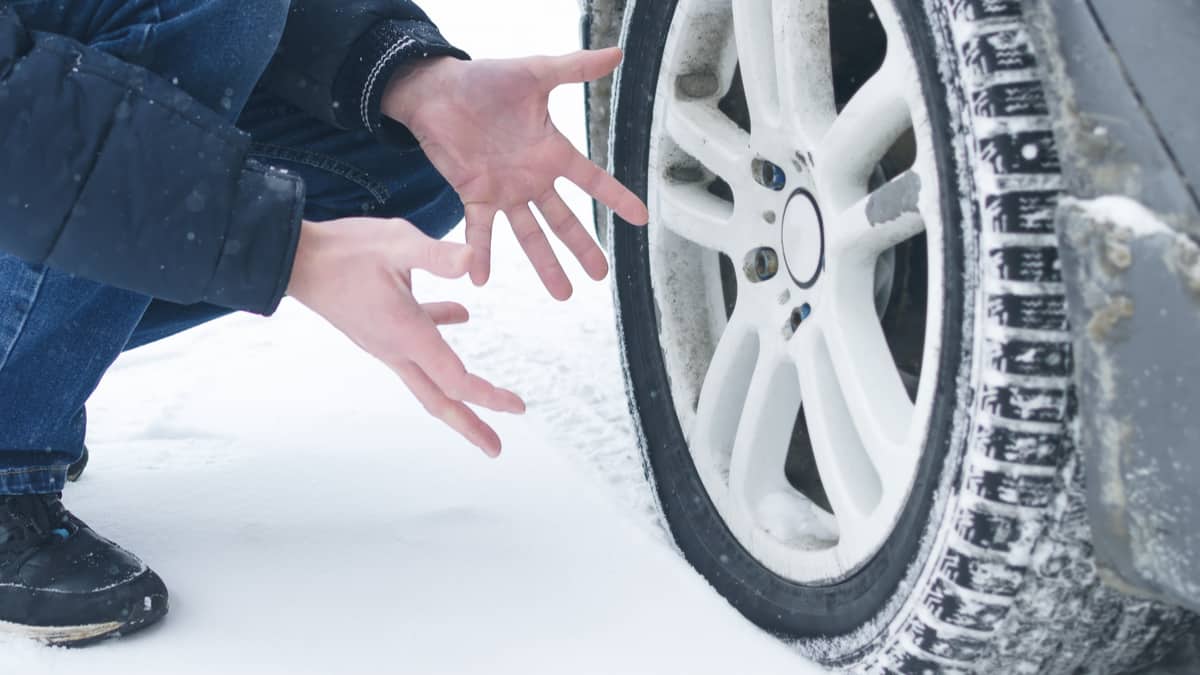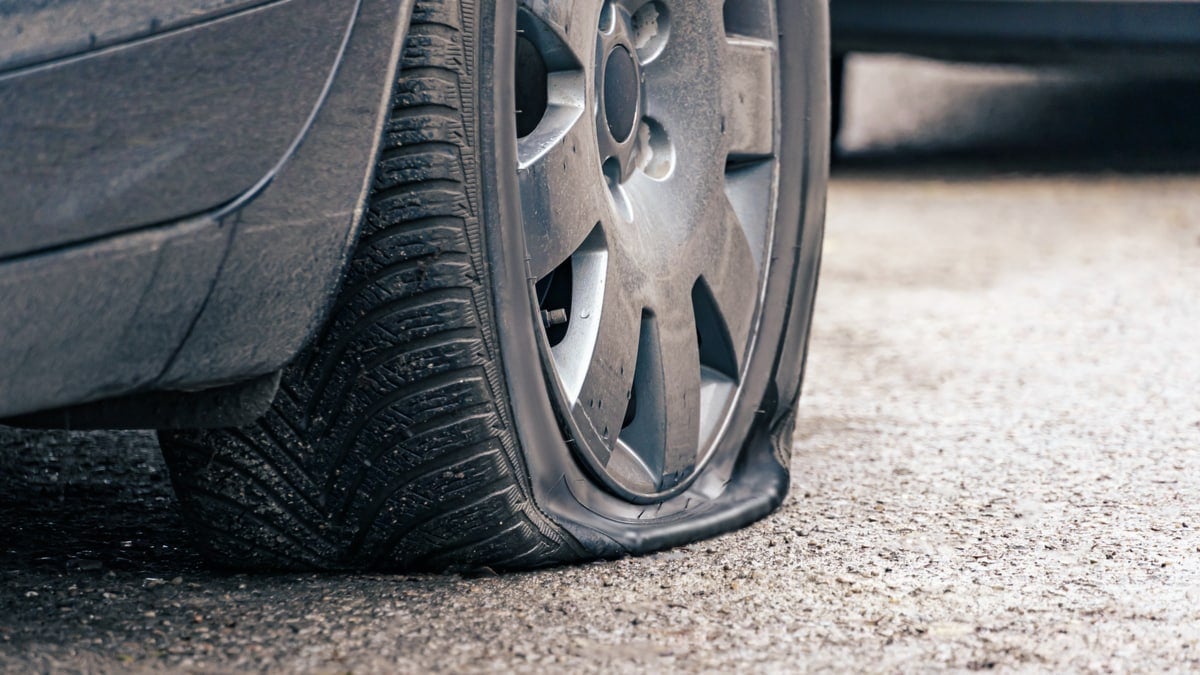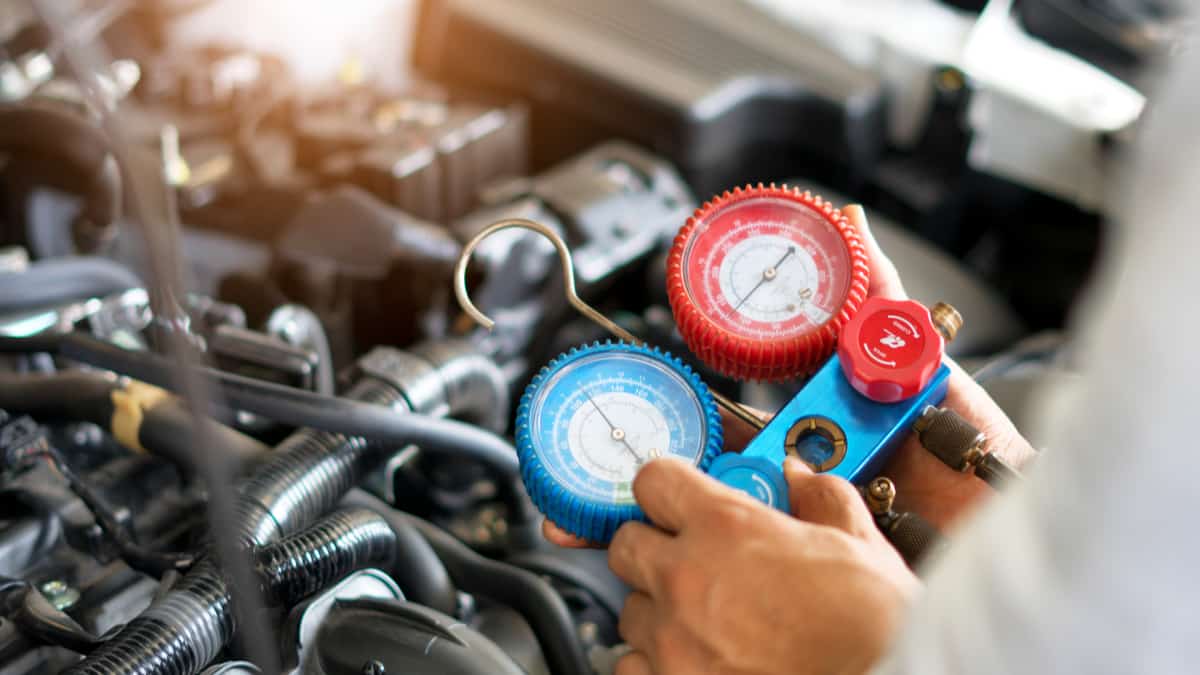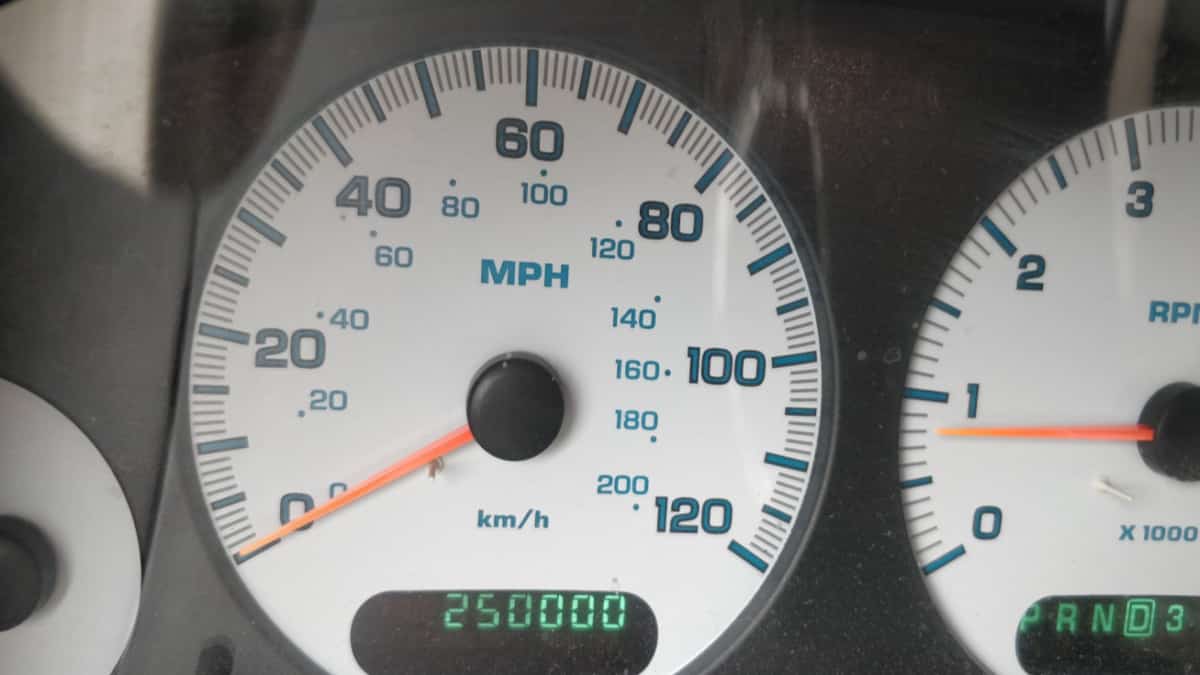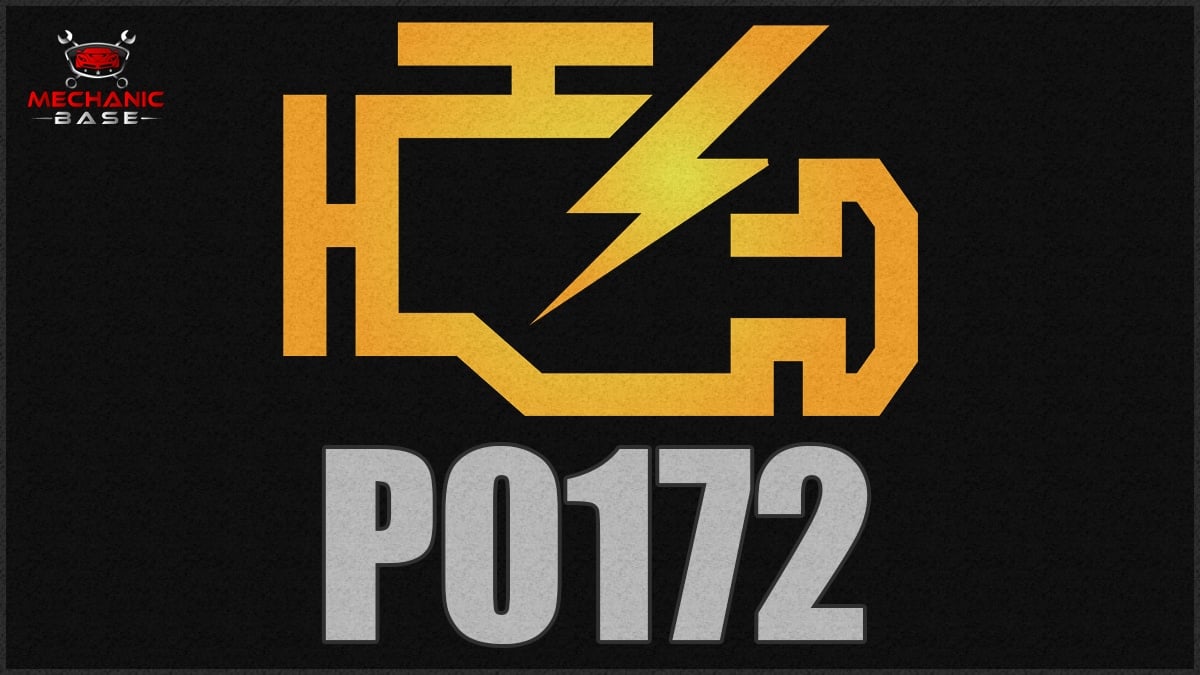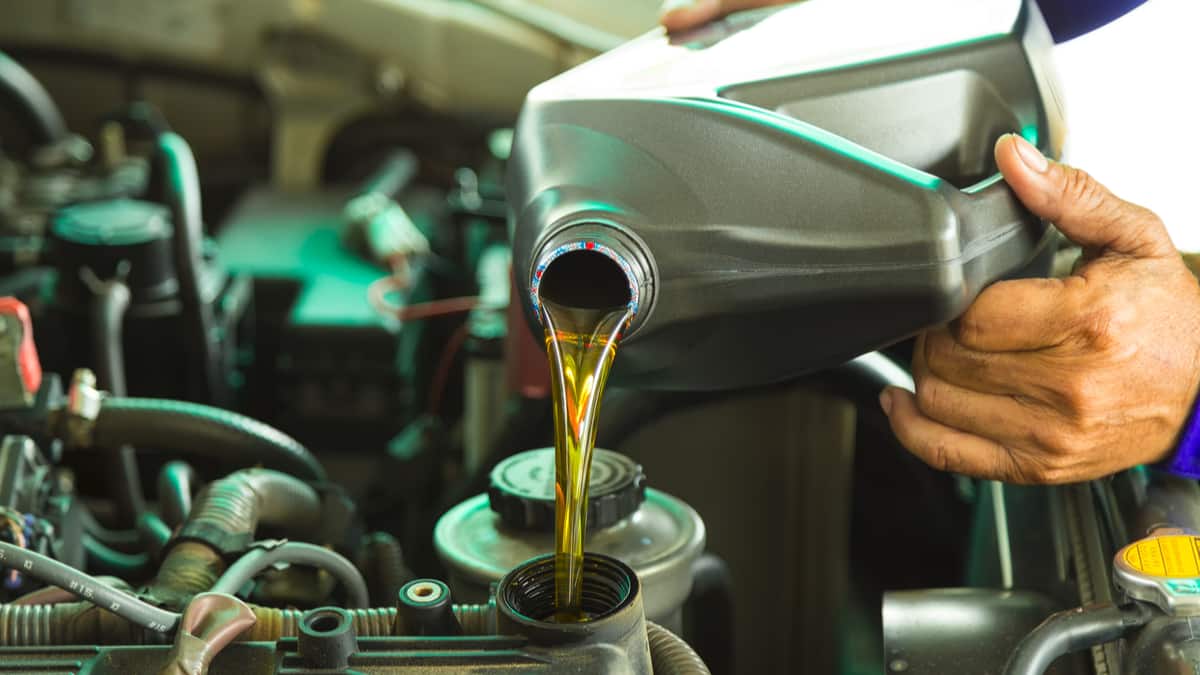Driving your car with proper tire pressure is essential to on-road safety, a smooth ride and maximum fuel efficiency. What tire pressure is considered too low and what happens if it drops to these figures?
Many passenger vehicles require a tire pressure between 30 and 35 psi. If that’s what your vehicle requires, driving on a tire with less than 20 psi is considered too low. However, you need to determine what is required for your vehicle to ensure a safe drive.
In this guide, we talk about when it’s no longer safe to drive on an underinflated tire. We point out the signs of low tire pressure, show you where to find the recommended psi and explain the dangers of having too little air pressure. By the end, you’ll be convinced that watching the tire pressures is critical to ensure on-road safety.
Where to Find Recommended Tire Pressure Rating
You can find the recommended tire pressure on the sticker inside the driver’s side door jamb. This card also shows valuable information such as the vehicle weight and VIN. It also shows you the size of the tires on the car, in case you need to have them replaced.
If there’s no information found there, you can also look in your owner’s manual. The specs listed are for when the tires are cold, as the pressures will change once they get warm from driving.
READ MORE: How to Find the Correct Tire Pressure For Your Car (4 Steps)
Signs of Low Tire Pressure
1. TPMS Light
On newer models, you will find a low tire pressure warning light on the dashboard. It illuminates when the pressures drop too low. These systems were mandated on vehicles starting with the 2008 model year.
However, the light alone can’t indicate that the pressures are wrong. In some cases, a sensor might have gone bad, thereby causing the light to come on as well. The only way to tell for sure is to stop driving and check the pressures.
2. Change in Handling
The way your car feels tells you a lot about the tire pressure. You will notice a change in driving and steering when the pressures drop too low. The car could start pulling to one side or can become difficult to keep under control, especially if one tire is lower than the others.
All of these conditions get worse when the weather changes dramatically. If the roads are slippery or icy, you are going to have even more trouble.
3. Uneven Tire Wear
Tire wear is a tell-tale sign that the pressures are too low. When the tires are properly inflated and everything is aligned, the tire tread should wear evenly. However, the underinflated tire wears on the sides more than in the middle.
The opposite occurs when the tires are overinflated. In this case, you will see more wear on the middle of the tread than on the sides. Still, the trouble with using this method to determine how low your tires are is that it can take a while for the tread to wear. You will have been riding on underinflated tires for far too long by the time this happens.
RELATED: Inner Tire Wear – Causes & How to Fix it
4. Reduced Fuel Economy
When tires are properly inflated and the engine is tuned-up, your fuel economy rating should be near what the EPA estimated. On the other hand, as the tires lose pressure, there will be more friction and a loss of grip, thereby converting to a decreased fuel economy.
For most people, this dip isn’t going to be noticeable. The only way you would see it is if you were already tracking the fuel economy of your vehicle. However, some publications figure you could lose up to three miles per gallon when the tires are underinflated. Over time, this adds up to a lot of fuel.
5. Increased Stopping Distance
Your tires must be properly inflated to ensure safe stopping distances. By now, you should have gotten accustomed to what’s normal for your vehicle. With practice, you’ll be able to tell when the time is taking longer than normal.
As the tires become underinflated, you are putting yourself more at risk on the road. If you are counting on stopping before a collision occurs, this small amount of tire pressure can make a big difference. It’s even more dangerous if you are trying to stop while it’s snowing or raining.
RELATED: 10 Best Tire Pressure Gauges – Review
What Happens if Your Tire Pressure is Too Low?
1. Loss of Control
You know that the steering and handling of the vehicle are going to be compromised as the tire pressure drops. How does this relate to how well you can keep control of the vehicle? It all depends on how low the tire pressure gets and your experience as a driver.
With that said, even the best driver can’t always keep control of a vehicle with a flat tire. If you are driving in poor conditions, the trouble is going to be even more pronounced. You could easily lose control going at any speed, especially if you have to take a tight turn while driving. There’s no reason to put yourself and others at this level of risk. Very quickly, lives can be changed from an accident that occurred because you drove on underinflated tires.
READ MORE: Is It Dangerous to Drive with Low Tire Pressure? (& What to Do)
2. Tire Blowout
A tire blowout can occur whether you have over or under-inflated tires. When the tire structure doesn’t get the support it needs, there could easily be a major on-road issue. The tires are holding the weight of your vehicle on top, causing them to fail quickly if they aren’t in good shape. The majority of blowouts are going to occur without warning and the situation can quickly become dangerous.
If you are involved in a blowout, you want to remain calm. It may start with a loud bang and the car will jerk to one side. If you make any sudden movements, you could quickly flip the vehicle or get into a bigger jam. Instead, hold the steering wheel securely as you gently take control of the vehicle. Pull yourself over to the side of the road as soon as it is safe. Until then, drastically reduce speed and turn on the car’s hazard lights so other people know you are in danger.
3. Excessive Wear/Damage
If you continue driving with the tires underinflated, you are going to cause wear that’s not necessary. Most obviously, you will need new tires sooner than you should. The tread and structure of the tire are going to wear out. You can prevent that from occurring by taking care of the tires, which doesn’t take a lot of time.
When the tires are underinflated, the situation also causes added stress to other components of the vehicle. Whether it is steering or suspension parts, there’s no reason to subject the components to so much pressure. If left unchecked, you might find yourself replacing expensive parts on top of getting new tires prematurely. All because you didn’t stop and put a little air in the tire or have it repaired. Prevention is always better than repair.
What is dangerously low tire pressure?
What is dangerous for your car depends on what car model you have and what the recommended tire pressure is. But anything below 20 psi for most cars is considered dangerous.
Why is my tire losing air but no hole?
There are a few possibilities why your tire might be losing air when there’s no hole visible. One possibility is that the valve stem itself is damaged or has a poor seal, which causes air to slowly leak out. Another possibility is that the wheel rim has a small crack or split in it, which also lets air out gradually. However, normal small holes are often impossible to see with a human eye so there could be a hole but you just can’t see it. Use soap to find small tire air leaks.
How far can you drive with low tire pressure?
How far you can drive with low tire pressure depends entirely on how low it is. If it is about 5 PSI lower than the recommended pressure, you can drive very far but you may find problems like uneven tire wear and higher fuel consumption. If the tire pressure is below 15 psi, you probably shouldn’t drive at all.
Should I add more air to my tires in cold weather?
Yes, and you should usually add 3-5 psi extra when inflating the tires during winter. Cold weather can cause your tires to lose pressure more quickly than usual. This is because the colder temperatures make the air inside the tire contract, which causes it to leak out more easily. The pressure also gets lower when the air inside the tires warms up while driving.
Categories: Tires
